We are currently in beta and update this search regularly.We would love to hear your feedback here.
We are currently in beta and update this search regularly.We would love to hear your feedback here.
Although white minimalism is still the norm, the retro trend is making a comeback in modern bathroom design, with homeowners incorporating popular colors, classic installations and patterned surfaces.Although the home is usually a static and traditional space, the bathroom has indeed undergone major transformations over the years.Although the outspoken people in the 1970s brought bright colors such as avocado green and mustard yellow, softer, softer-toned tiles were introduced in the 1980s.On the other hand, this century has set ideals on white and marble surfaces, smooth gloss finishes and silver installations.However, even if this all-white appearance is still the protagonist, bold retro enhancements are being revived and merged with modern elements, creating an elegant and lively atmosphere with a strong personality.
Essentially, the term retro in interior design refers to the revival of trends from the 1950s to 1980s into modern spaces, whether through colors, accessories, furniture, or geometric shapes and patterns.Nevertheless, this does not mean that the design must be outdated or outdated, but it means a compromise combination of the old and the new.In other words, embrace the modern appearance and fresh retro atmosphere, and convey a certain nostalgia.Today, this retro modern version is very popular among homeowners (especially millennials), who are attracted by a more unique and interesting aesthetic, getting rid of the classic white canvas.
From classic fixtures to colorful patterned walls, many past design elements can be incorporated into the bathroom to achieve this modern retro style.Here, we show some of the coming back trends and the timeless materials used to realize these trends.
Whether it’s on the floor, wall, sink, toilet or bathtub, there is nothing more retro than bold colors.Lively and soft tones such as gray blue, mint, peach, and salmon have appeared in bathrooms in the 1980s. The combination of seemingly incompatible tones creates an interesting atmosphere.Although this color scheme was outdated in the 90s, it seems to be making a comeback.However, the modern bathroom is not a fully saturated space, but a combination of popular colors in the form of tiles.
Many modern houses reflect this beauty, such as small granite houses with chimney showers covered with pale green tiles.Similarly, the interior of House L&W is mainly all white, but includes a retro-style shower room covered with mint tiles, which was a very popular bathroom sun visor in the 70s (even appeared in iconic “The Shining” In the movie).
Other examples include non-residential projects such as Lavabo Tri Suave or these mixed bathrooms without gender distinction.Both include huge soft pink tiles from the 50s (on the floor or wall), thus creating a comfortable modern space and retro feel.
Due to its versatility and timelessness, ceramic tiles have been used in bathrooms for decades.In addition to being durable, low-maintenance and light-weight, they are available in a variety of colors, sizes, finishes and patterns, providing a high degree of design flexibility for a variety of layouts and applications.Therefore, they can be customized according to the required decoration of the room, making this modern retro style possible.
When it comes to bathroom fixtures, people don’t immediately think of concepts such as “vibrant” or “daring”.However, the growing trend of colored sinks, bathtubs and toilets with golden metallic tones may change this situation.Inspired by the 1950s and 1960s, tones such as bubble gum powder and turquoise are returning and combining with modern minimalist forms.
For their part, chrome-plated installations have long dominated modern bathroom design, leaving behind the golden polished brass of the past few decades.However, nowadays, vintage-inspired gold tones have reappeared, whether it’s champagne bronze or brushed gold-and natural, matte or glossy finishes.For example, there is a gold trend in faucets, showers, and accessories. These accessories, together with the colorful atmosphere, convey a modern and retro feel.
With this in mind, manufacturers such as the British company Kast have developed a new version of a traditionally colored concrete sink.Due to the versatility and flexibility of concrete, they provide carved surfaces, highly defined textures and bold colors—especially when combined with golden elements—deliver a strong retro influence.Therefore, just adding some retro-style elements is enough to reflect the appearance.
Inspired by the Pop Art movement, the vacillating interior design of the 1960s is characterized by expressive textures, geometric shapes and saturated colors.Therefore, it has also seen the rise of a large number of patterned walls using tiles, terrazzo and interesting wallpaper.
Today, we see these vibrant patterns revived in modern bathrooms, combining unique shapes and retro color schemes.This is the case in the bathroom suite at Fagerstrom House, where the architect used green tiles on the floor and walls to create an immersive hexagonal pattern.Similarly, the bathroom refurbished by House HC uses geometric tile patterns with different shades of bright yellow.
In addition to ceramic tiles, terrazzo occupies an important place in households in the 50s and 60s until it becomes obsolete in the disco era.However, it didn’t take long before it was revived in contemporary interior design, mainly because of its durability, design flexibility and ease of installation.Although modern bathrooms like Room P use colorful terrazzo surfaces, other bathrooms like Cats’ Pink House use playful wallpaper that mimics the retro look of the material.
Just like in the fashion world, design trends will always make a comeback; but in order to survive, they must be reinterpreted, renewed, and combined with modern elements.Regarding the bathroom, the key is to balance the retro trend with the modern minimalist style and configuration.Only in this way can they be unique and retro, and at the same time suitable for newer buildings.
You will now receive updates based on what you care about!Personalize your stream and start following your favorite authors, offices, and users.
Post time: Jan-04-2022












